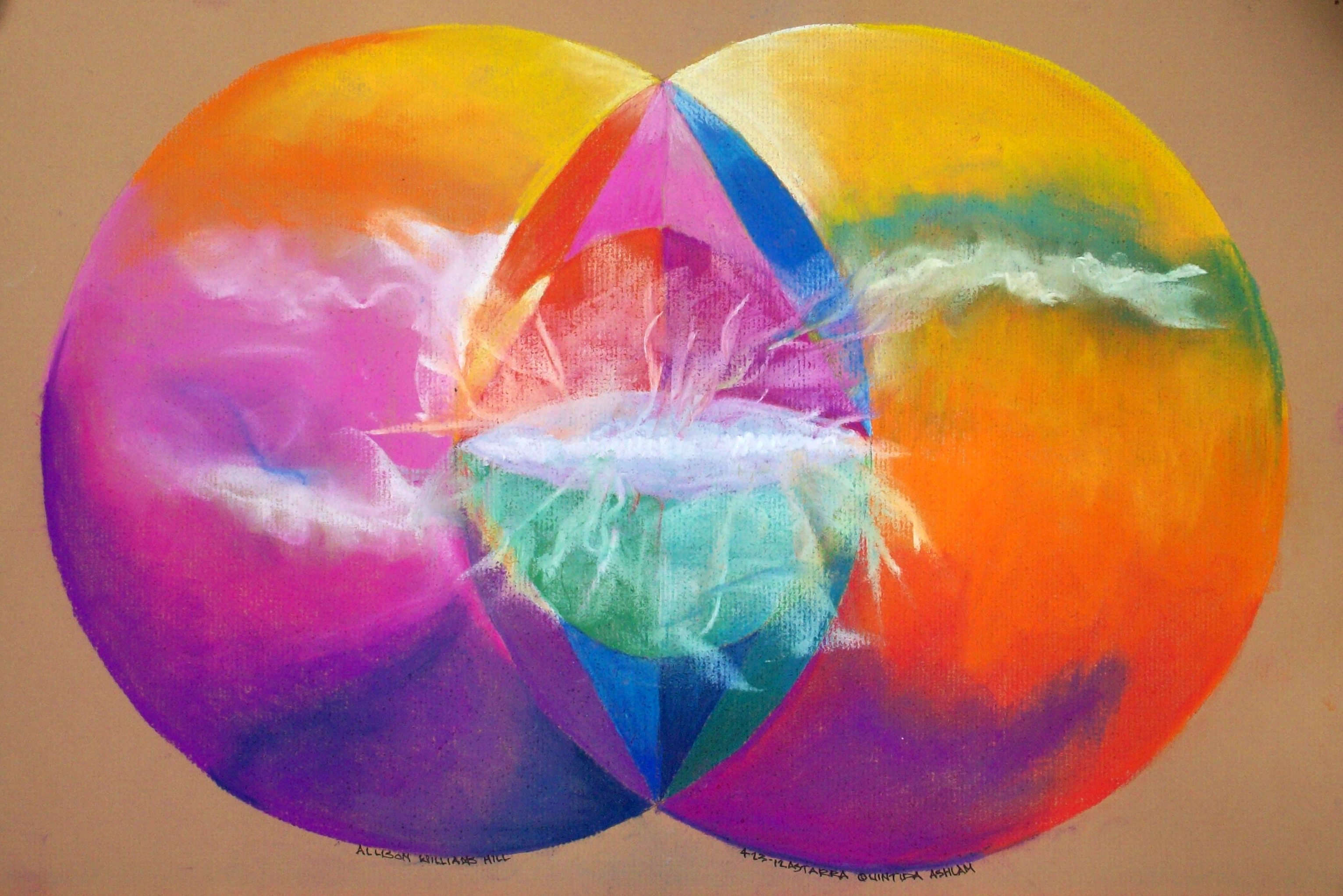Art of Architecture
Part II
"The Art of Architecture" from The Beautiful Necessity
by Claude Bragdon, FAIA
An architectural evolution that included the Christians, Egyptians, Greeks, Romans "...the so-called civilized world" produced monuments of beauty. For the sake of clearness and brevity the consideration of only one of several architectural evolutions will be attempted: that which, arising in the north of
Africa, spread to southern Europe, thence to the northwest of Europe and to
England- the architecture, in short, of the so-called civilized world.

Spirit of the Island II by Allison L. Williams Hill
This architecture, anterior to the Christian era, may be broadly divided into three great periods, during which it was successively practiced by three peoples: the Egyptians, the Greeks and the Romans. Then intervened the Dark Ages, and a new art arose, the Gothic, which was a flowering out in stone of the spirit of Christianity. This was in turn succeeded by the Renais-sance, the impulse of which remains today unexhausted. In each of these architectures the peculiar genius of a people and of a period attained to a beautiful, complete and coherent utterance, and notwithstanding the considerable intervals of time which sometimes separated them they succeeded one another logically and inevitably, and each was related to the one which preceded and which followed it in a particular and intimate manner.

The power and wisdom of ancient Egypt was vested in its priesthood, which was composed of individuals exceptionally qualified by birth and training for their high office, tried by the severest ordeals and bound by the most solemn oaths. The priests were honored and privileged above all other men, and spent their lives dwelling apart from the multitude in vast and magnificent temples, dedicating themselves to the study and practice of religion, philosophy, science and art--subjects then intimately related, not widely separated as they are now. These men were the architects of ancient Egypt: theirs the minds which directed the hands that built those time-defying monuments.

Salisbury Cathedral Details by Allison L. Williams Hill
The rites that the priests practiced centered about what are known as the Lesser and the Greater Mysteries. These consisted of representations by means of symbol and allegory, under conditions and amid surroundings the most awe-inspiring, of those great truths concerning man's nature, origin and destiny of which the priests--in reality a brotherhood of initiates and their pupils--were the custodians. These ceremonies were made the occasion for the initiation of neophytes into the order, and the advancement of the already
initiated into its successive degrees. For the practice of such rites, and others designed to impress not the elect but the multitude, the great temples of Egypt were constructed. Everything about them was calculated to induce a deep seriousness of mind, and to inspire feelings of awe, dread and even terror, so as to test the candidate's fortitude of soul to the utmost.
The avenue of approach to an Egyptian temple was flanked on both sides, sometimes for a mile or more, with great stone sphinxes--that emblem of man's dual nature, the god emerging from the beast. The entrance was through a single high doorway between two towering pylons, presenting a vast surface sculptured and painted over with many strange and enigmatic figures, and flanked by aspiring obelisks and seated colossi with faces austere and calm. The large court thus entered was surrounded by high walls and colonnades, but was open to the sky. Opposite the first doorway was another, admitting to a somewhat smaller enclosure, a forest of enormous carved and painted columns supporting a roof through the apertures of which sunshine gleamed or dim light filtered down. Beyond this in turn were other
courts and apartments culminating in some inmost sacred sanctuary.
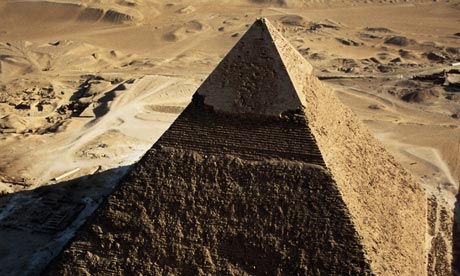
The Pyramid of Chephren
Not alone in their temples, but in their tombs and pyramids and all the sculptured monuments of the Egyptians, there is the same insistence upon the sublimity, mystery and awefulness of life, which they seem to have felt so profoundly. But more than this, the conscious thought of the masters who conceived them, the buildings of Egypt give utterance also to the toil and suffering of the thousands of slaves and captives which hewed the stones out of the heart of the rock, dragged them long distances and placed them one upon another, so that these buildings oppress while they inspire, for there is in them no freedom, no spontaneity, no individuality, but everywhere the felt
presence of an iron conventionality, of a stern immutable law.
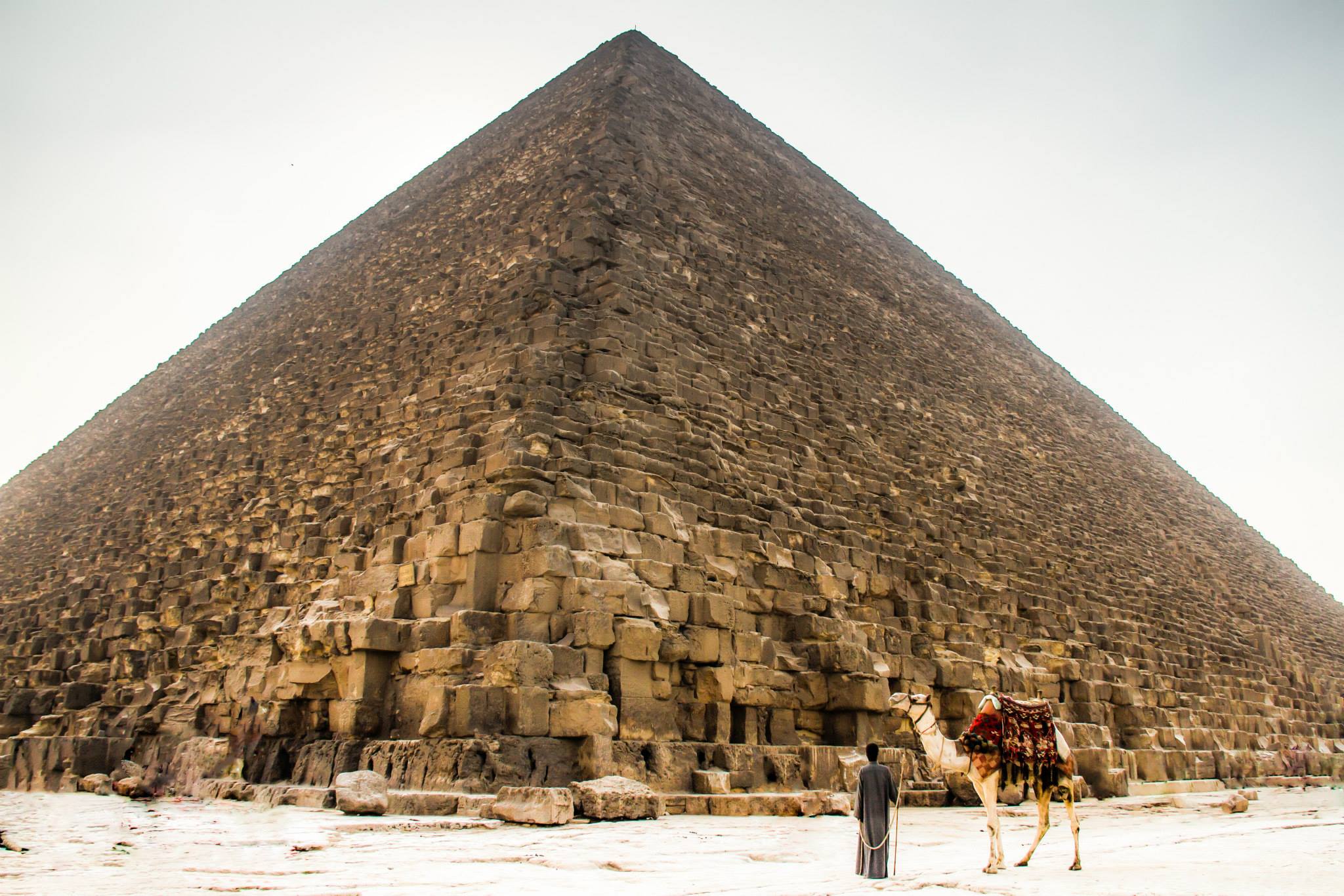
Great Pyramid of Giza
In Egyptian architecture is symbolized the condition of the human soul awa-kened from its long sleep in nature, and become conscious at once of its divine source and of the leaden burden of its fleshy envelope. Egypt is humanity new-born, bound still with an umbilical cord to nature, and strong not so much with its own strength as with the strength of its mother. This idea is aptly symbolized in those gigantic colossi flanking the entrance to some rock-cut temple, which though entire are yet part of the living cliff out of which they were fashioned.
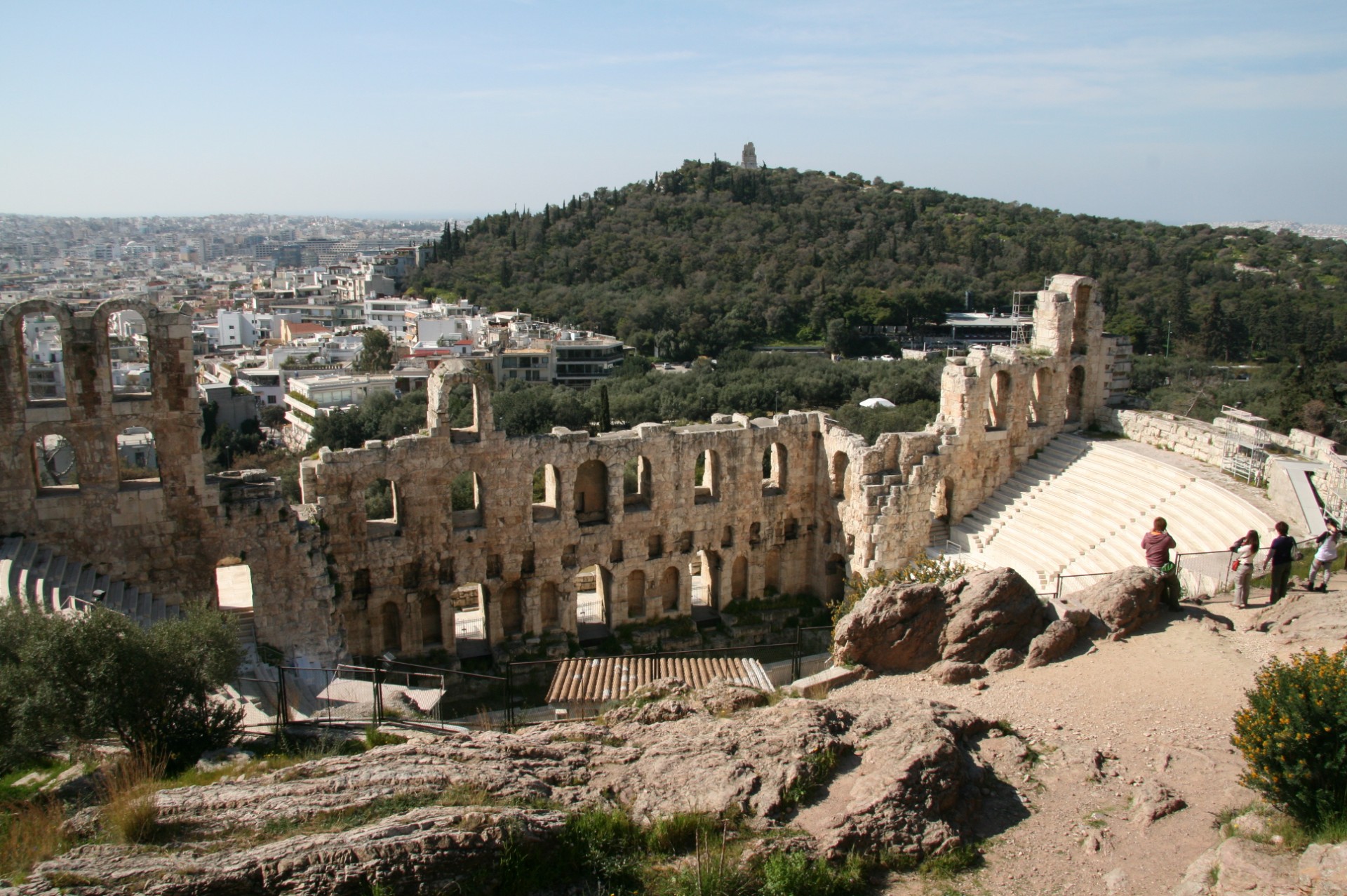
Athens, Greece Ruins
In the architecture of Greece the note of dread and mystery yields to one of pure joyousness and freedom. The terrors of childhood have been outgrown, and man revels in the indulgence of his unjaded appetites and in the exercise of his awakened reasoning faculties. In Greek art is preserved that evane-scent beauty of youth which, coming but once and continuing but for a short interval in every human life, is yet that for which all antecedent states seem a preparation, and of which all subsequent ones are in some sort an effect. Greece typifies adolescence, the love age, and so throughout the centuries humanity has turned to the contemplation of her, just as a man all his life long secretly cherishes the memory of his first love.
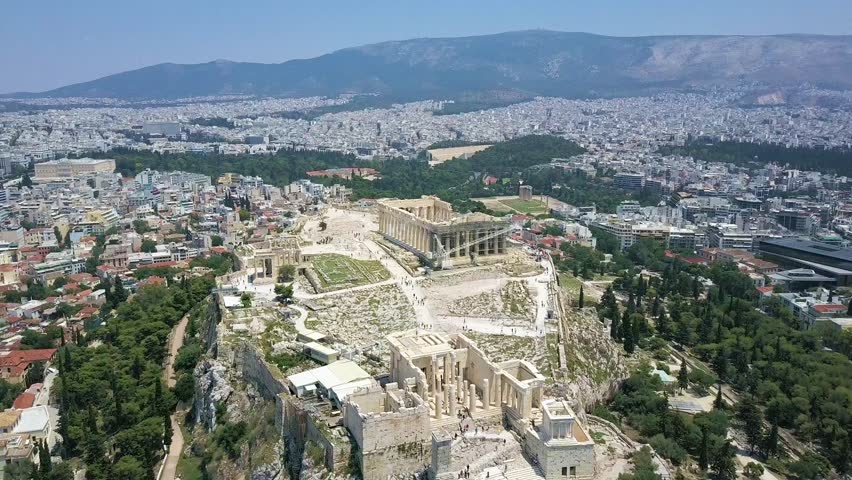
Ancient Greece Ruins from the Acropolis
An impassioned sense of beauty and an enlightened reason characterize the productions of Greek architecture during its best period. The perfection then attained was possible only in a nation whereof the citizens were them-selves critics and amateurs of art, one wherein the artist was honored and his work appreciated in all its beauty and subtlety. The Greek architect was less bound by tradition and precedent than was the Egyptian, and he worked unhampered by any restrictions save such as, like the laws of harmony in music, helped rather than hindered his genius to express itself--restrictions
founded on sound reason, the value of which had been proved by expe-rience.
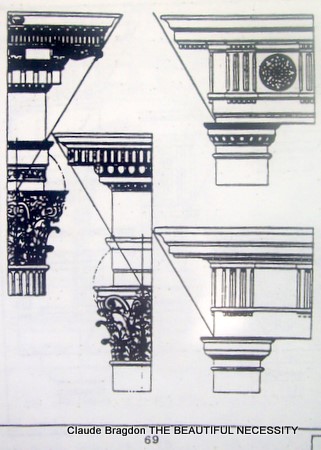
The Doric order was employed for all large temples, since it possessed in fullest measure the qualities of simplicity and dignity, the attributes appro-priate to greatness. Quite properly also its formulas were more fixed than those of any other style. The Ionic order, the feminine of which the Doric may be considered the corresponding masculine, was employed for smaller temples; like a woman it was more supple and adaptable than the Doric, its proportions were more slender and graceful, its lines more flowing, and its ornament more delicate and profuse. A freer and more elaborate style than either of these, infinitely various, seeming to obey no law save that of beauty, was used sometimes for small monuments and temples, such as the Tower of
the Winds, and the monument of Lysicrates at Athens.
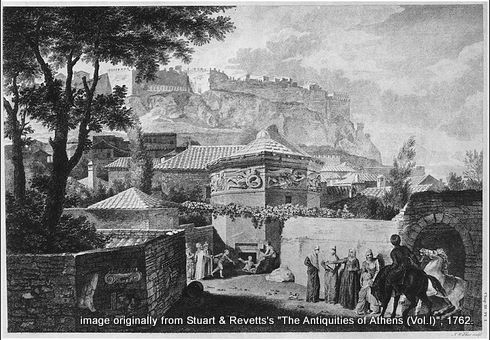
Tower of the Winds
Because the Greek architect was at liberty to improve upon the work of his predecessors if he could, no temple was just like any other, and they form an ascending scale of excellence, culminating in the Acropolis group. Every detail was considered not only with relation to its position and function, but in regard to its intrinsic beauty as well, so that the merest fragment, detached from the building of which it formed a part, is found worthy of being treasured in our museums for its own sake.
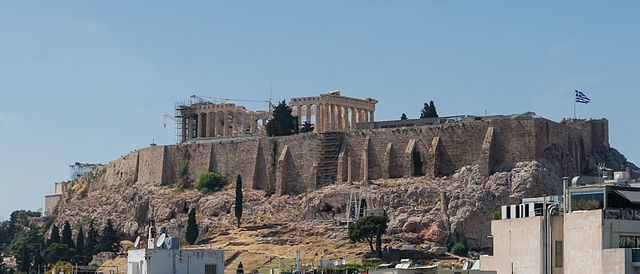
Acropolis, Parthenon, Athens,Greece
Just as every detail of a Greek temple was adjusted to its position and expressed its office, so the building itself was made to fit its site and to show forth its purpose, forming with the surrounding buildings a unit of a larger whole. The Athenian Acropolis is an illustration of this: it is an irregular fortified hill, bearing diverse monuments in various styles, at unequal levels and at different angles with one another, yet the whole arrangement seems as organic and inevitable as the disposition of the features of a face. The Acropolis is an example of the ideal architectural republic wherein each individual contributes to the welfare of all, and at the same time enjoys the utmost personal liberty (Illustration 1).
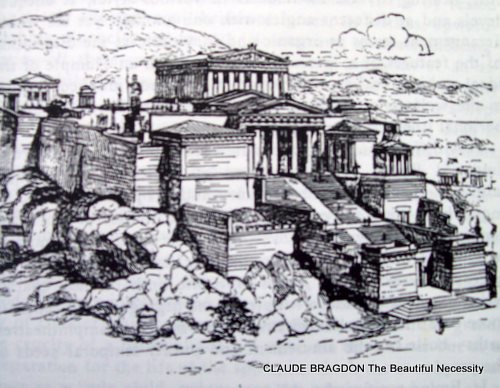
Very different is the spirit bodied forth in the architecture of Imperial Rome. The iron hand of its sovereignty encased within the silken glove of its luxury finds its prototype in buildings which were stupendous crude brute masses of brick and concrete, hidden within a covering of rich marbles and mosaics, wrought in beautiful but often meaningless forms by clever degenerate Greeks. The genius of Rome finds its most characteristic expression, not in temples to the high gods, but rather in those vast and complicated struc-tures--basilicas, amphitheatres, baths--built for the amusement and purely temporal needs of the people.
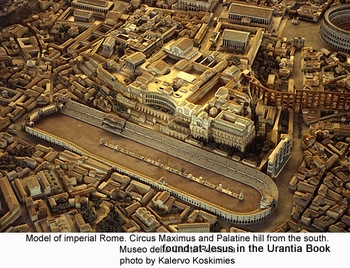
If Egypt typifies the childhood of the race and Greece its beautiful youth, Republican Rome represents its strong manhood--a soldier filled with the lust of war and the love of glory--and Imperial Rome its degeneracy: that soldier become conqueror, decked out in plundered finery and sunk in sensuality, tolerant of all who minister to his pleasures but terrible to all who interfere with them.

The Roam by Allison L. Williams Hill
Links
The above meditation mandala will be available soon.

